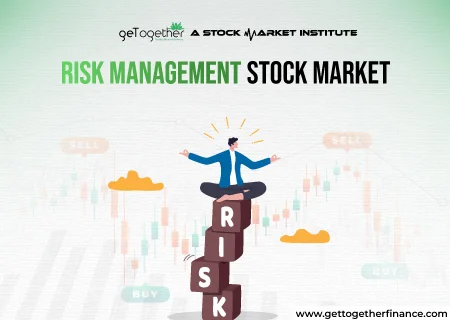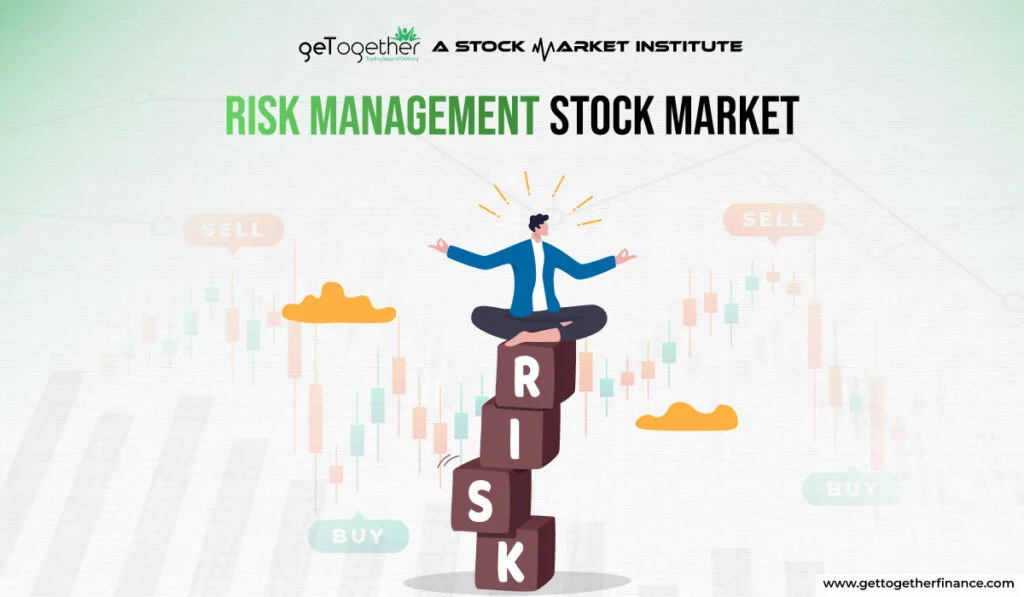Risk Management in Stock Market
- August 3, 2024
- 1023 Views
- by Manaswi Agarwal


In the stock market, risk management is a crucial aspect that helps investors to react towards the volatile market environment. Investors can manage their risks arising from various factors like market trends, economic conditions, company specific reasons and geopolitical events.
Table of Contents
ToggleWhat is Risk Management?
Risk Management is a crucial aspect that helps to cut down the losses while protecting investors and traders from losing their money. Risk Management is a systematic process of identifying and mitigating the risks associated with investment in the stocks. It is essential for investors to develop risk management techniques to minimize the impact of market fluctuations.
How does Risk Management Work?

Managing risk is a complex task which is segregated in different parts for its simplification. The working of risk management is divided into the segments of identifying the risks, evaluating the assets and implementation of the strategies according to the risks associated.
Identifying the Risks
Before investing, investors must firstly identify the risks associated with investment by thoroughly studying the market conditions. Identifying market risks, company specific risks, external factors, economic factors, and political factors is essential to know the potential threats that can affect the investment. So, investors should keep themselves aware about the possible risks to take timely decisions in times of uncertainty.
Evaluation of the Risks
Identifying the possible risks in an investment allows you to evaluate the risks. Evaluation of risks can guide you to modify the plans based on the risk assessment. Evaluating the risks and risk management techniques reduces the severity of losses if something goes in the wrong direction.
Implementing Effective Risk Measures
After the identification and assessment of risk evaluation activities, a proper execution is required so that the losses can be minimized. The final stage is to implement effective methods and strategies to mitigate and avoid unidentified risks.
How to manage risks in a trade?

To manage the risks in the stock market, the amount invested in a trade must be done according to the investment capital of an individual. So initially, taking risk of one percent of capital is feasible per trade. Being a conservative and beginner trader, it is advised to take risk of one percent of capital and increase it slowly as per your trading experience is enhanced and nourished. It is always recommended to trade with a calculated amount rather than any random amount.
Let us consider this with the help of an example:
Suppose the total amount of capital is 100000.
Risk Per Trade = 1% Therefore, 1% of 100000 = 1000
So, as a beginner 1% of risk is enough to gain experience in the long term. The quantity of trade is derived by the risk per trade divided by the difference between entry and stop loss.
For instance, let us assume the difference between entry and stop loss to be Rs10.
Hence, the quantity = 1000/10 = 100 shares.
This would mean that you can lose only Rs 1000 per trade after executing the stop loss and hence manage the risk with efficiency. The level of risk per trade is increased from 1% to 1.5-2% as per the experience. Let’s say you are able to find 4 best trade setups in a month and keeping the risk reward ratio as 2:1 you can get 2000 per trade while limiting the losses to 1000.
Once you get the accuracy of 90% then you can focus on taking daily trades while increasing your amount of risk. This concept is clearly understood from the last class of elementary course Trading in the zone offered by GTF on YouTube.
Types of Risk Management

Losses can occur due to different reasons and all these reasons must be looked upon carefully for a better implementation of risk management strategies. The types of risk management include Market Risks, Credit Risk, Operational Risk Management, Liquidity Risk Management, and Reputational Risk Management.
Market Risk Management
Potential losses can occur due to market fluctuations caused by the variations in interest rates, inflation or currency exchange rates. Market risks are managed through adopting strategies like portfolio diversification, hedging and active involvement over the financial market to navigate the fluctuations timely.
Credit Risk Management
Creditworthiness of an individual is assessed to manage the risk due to borrowers’ inability to pay back the loan or fulfill other financial commitments. It requires the credit risk manager to implement strategies that can have a potential impact on collateral or insurance.
Operational Risk Management
Operations risks are raised when losses occur due to failure in internal processes, systems or people. Operational risks might occur in any scenarios which are managed by implementing controls that can minimize the impact of operational failures.
Liquidity Management
Liquidity risk describes the inability of an investor to convert the assets into cash quickly as needed. The liquidity risk is managed by keeping enough cash reserves to meet the demands of liquidity as and when required.
Reputational Management
The reputation of a company matters for investment purposes because investors can lose money due to damage to a company’s reputation or brand. The risk of reputation needs to be dealt with responding quickly to the negative feedback.
Also Read: Portfolio Management v/s Financial Planning
Strategies for Risk Management

Risk management is essential for each and every investor and the risks in the stock market can be mitigated through various techniques like diversification, hedging, or active market participation. Let us understand them below in detail:
Portfolio Diversification
Portfolio Diversification is a strategy implemented to spread the investments across different sectors, asset classes, geographies, etc. Therefore the risk of downfall in one sector can be mitigated by the investments in other sectors. If all the capital is invested in a single asset class then it might vanish if the market moves in the opposite direction. Hence, the risk is managed by spreading investments among various sectors.
Stop Loss Order
To manage the risks, traders have to set stop loss orders in each of their trades. A specified stop loss order helps to reduce the chances of more losses in a single trade and retains the funds from getting wiped off completely. It is an important strategy to be implemented before placing an entry into the trade so that a trader is clear about exit position without making further losses.
Hedging
Hedging is a risk management activity where investors hedge the risks by buying or selling an investment to potentially reduce the risk of an existing position in the portfolio. It is an advanced strategy used to offset the losses by taking an opposite position in a related asset. This is one of the effective ways to protect the finances of an individual from being exposed to a risky situation.
Active Market Participant
Actively participating in the market allows investors to remain updated with the market movements according to which decisions can be made instantly. An active participation in the market guides investors to stay ahead from the market risks and save themselves from downturns in the market. So being an active participant in the market is a great advantage for investors.
Technical Analysis
Technical Analysis is an efficient and reliable method to analyze the stock market. Demand and Supply theory in technical analysis is an approach to determine the buying and selling pressure in the stock by analyzing charts. This method has the efficiency to identify stocks that are inexpensive and have prospective growth chances.
Dollar Cost Averaging
Dollar cost averaging is an approach that involves investing the same amount of money at regular intervals regardless of the share price and market conditions. It is a habit of investing regularly which enables investors to generate more profits from market volatility when the stock prices are low.
Summing it up…
Risk management is a strategy to minimize losses and maximize profits by adopting strategies like diversification, hedging and other. To learn about risk management in investment, investors should refer to the trading in the zone course offered by GTF which explains risk management in depth.
FAQs
What is Risk Management in the Stock Market?
Risk management in the stock market is an essential process to protect investors from potential losses. In the stock market, investors should protect themselves from various market risks by taking appropriate risk measures and implementing them effectively.
What are the Risk Management Strategies?
Risk management strategies protect investors from losses and some of the strategies include: hedging, portfolio diversification, active market participation, using technical analysis, etc.
What is Hedging?
Hedging is an advanced technical strategy where investors buy or sell a position in the opposite direction of an already executed trade and hence reduce the losses from the existing trade.
What are the Types of Risk Management?
There are various types of risk management which include market risk, credit risk, operational risk, liquidity risk, reputational risks, and legal and regulatory risks.
What is Portfolio Diversification?
Portfolio diversification is a risk management strategy in which the risks are managed by spreading the investments across different asset classes, sectors and assets.



 Instagram
Instagram
